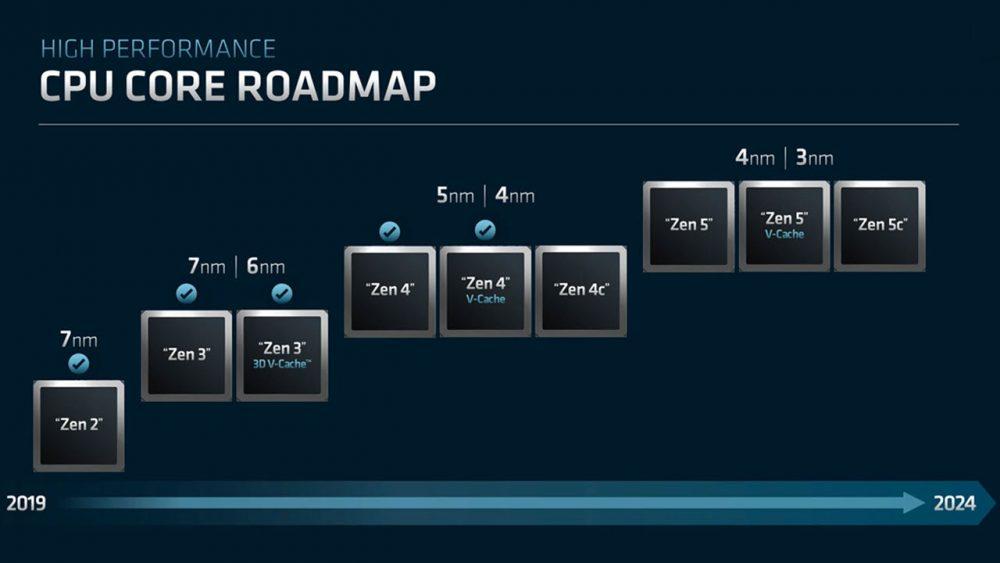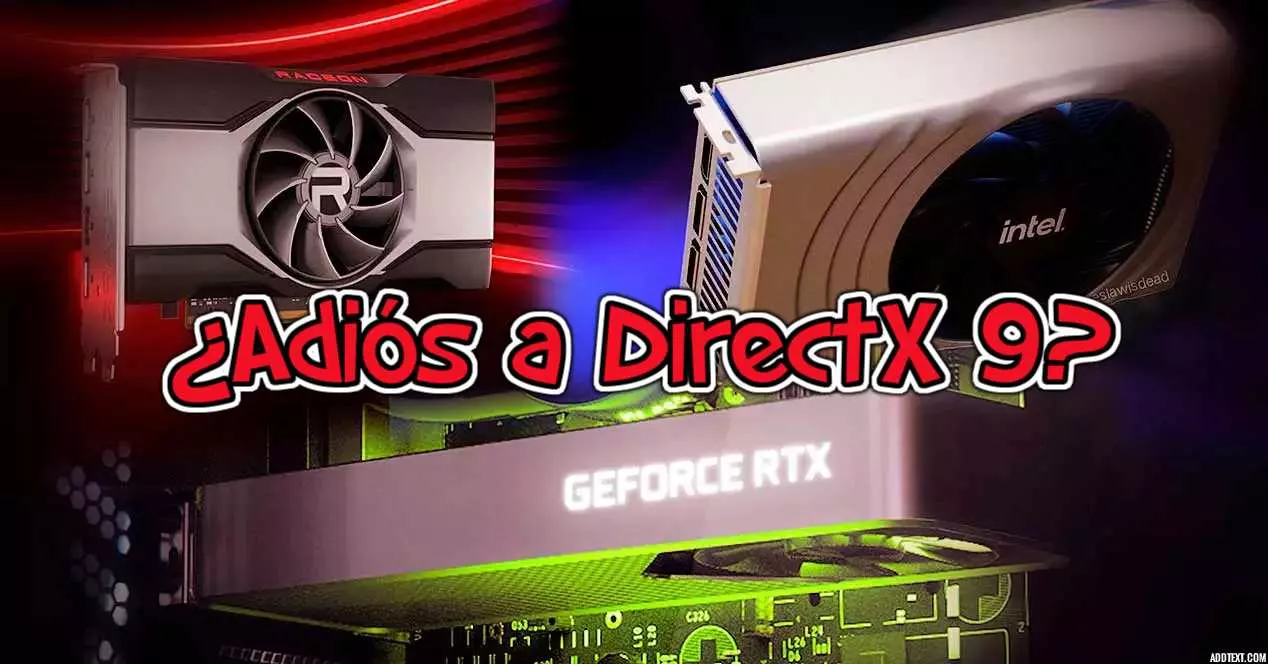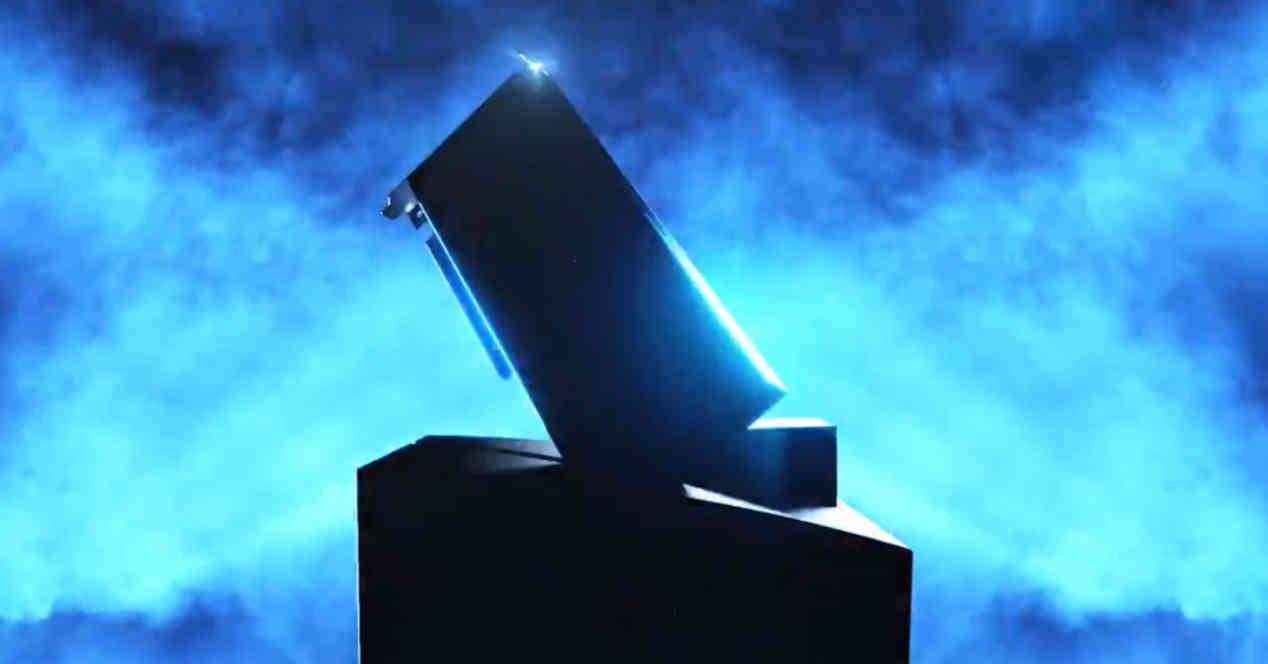
Currently Intel and AMD have a neck-and-neck battle on a technical level in the processor market if we ignore commercial terms and market share. Although the brand co-founded by Gordon Moore can be allowed, within what is possible a certain level of slippage, the one that Lisa Su presides over today. That is why they are under constant pressure, which they have managed to overcome thanks to an excellent execution of their roadmap, but each new generation becomes a challenge for them.
What is known about the Zen 5 microprocessor architecture?
We have known about the existence of Zen 5, although it may seem surprising, for years now due to the fact that its development was mentioned by AMD even before the release of Zen 3. At that time it seemed a long way off. However, despite being a product for the future that has not seen the light of day as a commercial product, it is much closer to being on our PCs than it was then.
Three different variants of the processor
The official AMD roadmap tells us that we are going to see three products derived from the architecture and the launch strategy will be the same as with the current architecture. On the one hand, the standard version that will come to us under TSMC’s 4nm node, then the version with V-Cache and finally the dense version of the architecture that will come to us under TSMC’s 3nm node.
We must start from the fact that TSMC’s N4 node is a variant of the 5 nm node used today by Zen 4, which does not mean that there are few changes from one generation to another. Actually, everything is part of the strategy that Lisa Su’s have been doing for years. For example, Zen 2 was an improved version of Zen, but under a new manufacturing node. Zen 3 was the architecture leap under the N7 node and Zen 4 the polished version of it. So in Zen 5 we should expect another important leap in terms of architecture.
Compatible with socket AM5
Since the release date of the AMD Zen 5 is for 2024, which falls within the useful life of socket AM5, so the new processor can be mounted on the same boards that are currently being sold for Ryzen. 7000. As far as chipset-based desktop designs outside of support for higher speed DDR5 memory, we don’t expect any major changes to the next-gen IOD, though considering the Xilinx purchase we might see new things.
What changes do we know we will see in the Zen 5 architecture?
Officially, AMD has not said much about the architecture, however, there is a detail that tells us a lot about where the shots will go with Zen 5, but that has gone unnoticed to say the least. Specifically, a slide where they mentioned three differentiated points regarding the future architecture:
The first point is what is expected of a new generation processor, so we are going to ignore it. But it is the second and the third point that is really important to us. What does each of them mean? When we say that the Front-End is wider, we mean that the processor can work with more instructions at the same time due to the fact that the instruction decoder in the control unit has increased this capacity.
This is a change that Intel had already made in its processors, Sunny Cove had gone from 4 to 5 instructions decoded in parallel and with Golden Cove to 6. The fact is that AMD has been using the same instruction decoder for many generations now. limited to 4 units. Which will be the main point for the performance increase in Zen 5.
AI improvements
In Zen 4 we have seen how AMD has integrated support for AVX-512 instructions, we don’t know what they will do in Zen 5, but it is expected that we will see some elements related to Machine and Deep Learning. Of course, here we cannot venture and we have two different possibilities:
- Changes in the IOD with the addition of a neural processor, we have already seen this in the Ryzen 7000 for laptops, but not on desktops. In any case, it is a market that is escaping them and they do not want to be left behind.
- AMX, tensor units in the CPU, like the ones Intel added in Golden Cove. They are units that have the same operation as the tensor cores in NVIDIA GPUs, but in terms of processor.
In any case, AI needs large bandwidths to function well and today it is a market more typical of the world of servers. For what we rather expect these improvements applied to EPYC processors and not to Ryzen, what’s more, due to the high bandwidth they require, we would not be surprised by some variant with HBM memory, although that already falls within the field of speculation .





